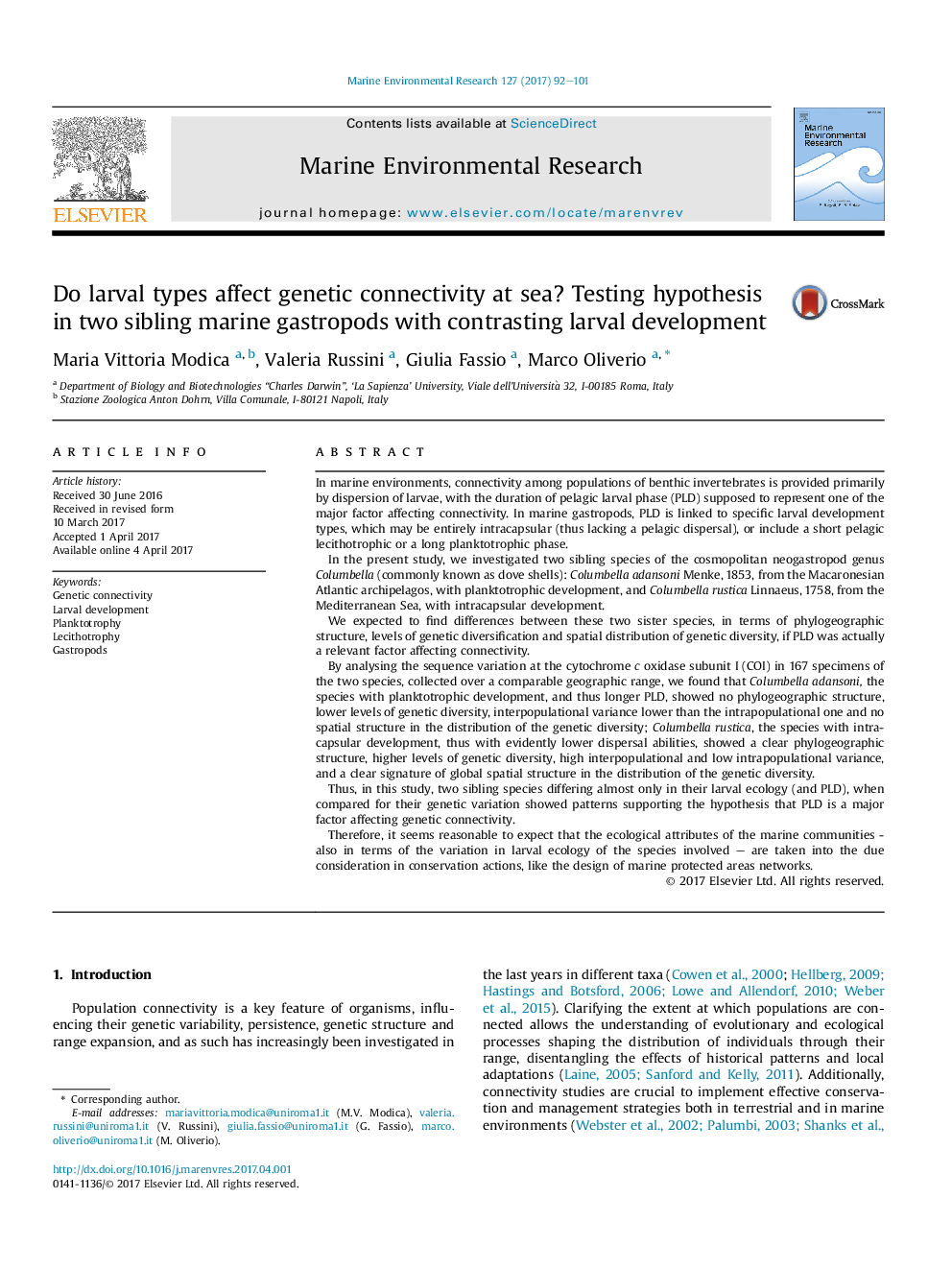| Article ID | Journal | Published Year | Pages | File Type |
|---|---|---|---|---|
| 5766296 | Marine Environmental Research | 2017 | 10 Pages |
â¢Two sibling species of dove shells, Columbella rustica and C. adansoni, differ mainly in their pelagic larval duration (PLD).â¢C. adansoni, with planktotrophic development, showed no spatial structure in the distribution of the genetic diversity.â¢C. rustica, with intracapsular development, showed a global spatial structure in the distribution of the genetic diversity.â¢Patterns of genetic variation supported the hypothesis thatPLD is a major factor affecting genetic connectivity.
In marine environments, connectivity among populations of benthic invertebrates is provided primarily by dispersion of larvae, with the duration of pelagic larval phase (PLD) supposed to represent one of the major factor affecting connectivity. In marine gastropods, PLD is linked to specific larval development types, which may be entirely intracapsular (thus lacking a pelagic dispersal), or include a short pelagic lecithotrophic or a long planktotrophic phase.In the present study, we investigated two sibling species of the cosmopolitan neogastropod genus Columbella (commonly known as dove shells): Columbella adansoni Menke, 1853, from the Macaronesian Atlantic archipelagos, with planktotrophic development, and Columbella rustica Linnaeus, 1758, from the Mediterranean Sea, with intracapsular development.We expected to find differences between these two sister species, in terms of phylogeographic structure, levels of genetic diversification and spatial distribution of genetic diversity, if PLD was actually a relevant factor affecting connectivity.By analysing the sequence variation at the cytochrome c oxidase subunit I (COI) in 167 specimens of the two species, collected over a comparable geographic range, we found that Columbella adansoni, the species with planktotrophic development, and thus longer PLD, showed no phylogeographic structure, lower levels of genetic diversity, interpopulational variance lower than the intrapopulational one and no spatial structure in the distribution of the genetic diversity; Columbella rustica, the species with intracapsular development, thus with evidently lower dispersal abilities, showed a clear phylogeographic structure, higher levels of genetic diversity, high interpopulational and low intrapopulational variance, and a clear signature of global spatial structure in the distribution of the genetic diversity.Thus, in this study, two sibling species differing almost only in their larval ecology (and PLD), when compared for their genetic variation showed patterns supporting the hypothesis that PLD is a major factor affecting genetic connectivity.Therefore, it seems reasonable to expect that the ecological attributes of the marine communities - also in terms of the variation in larval ecology of the species involved - are taken into the due consideration in conservation actions, like the design of marine protected areas networks.
